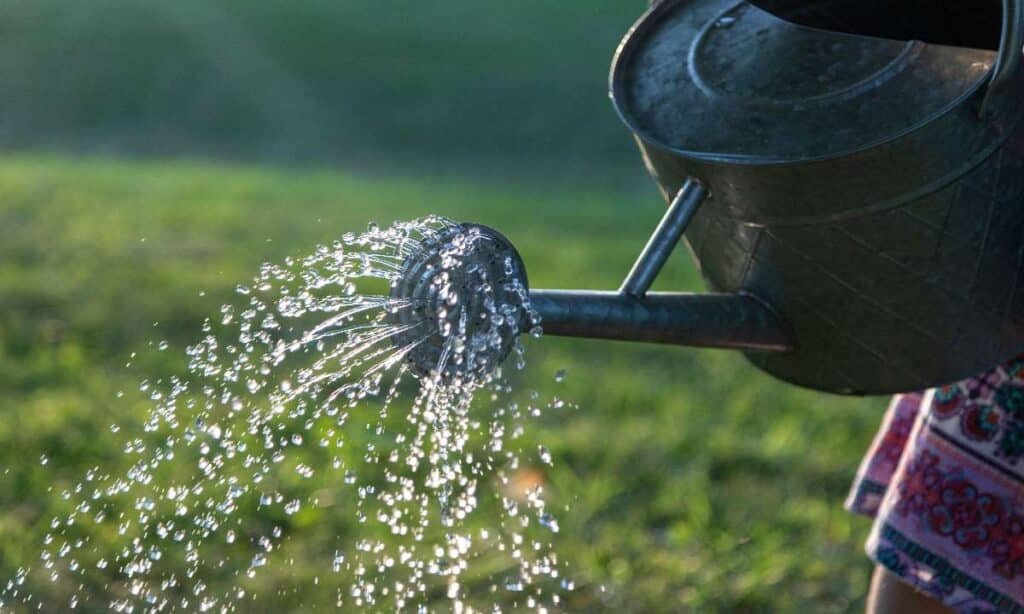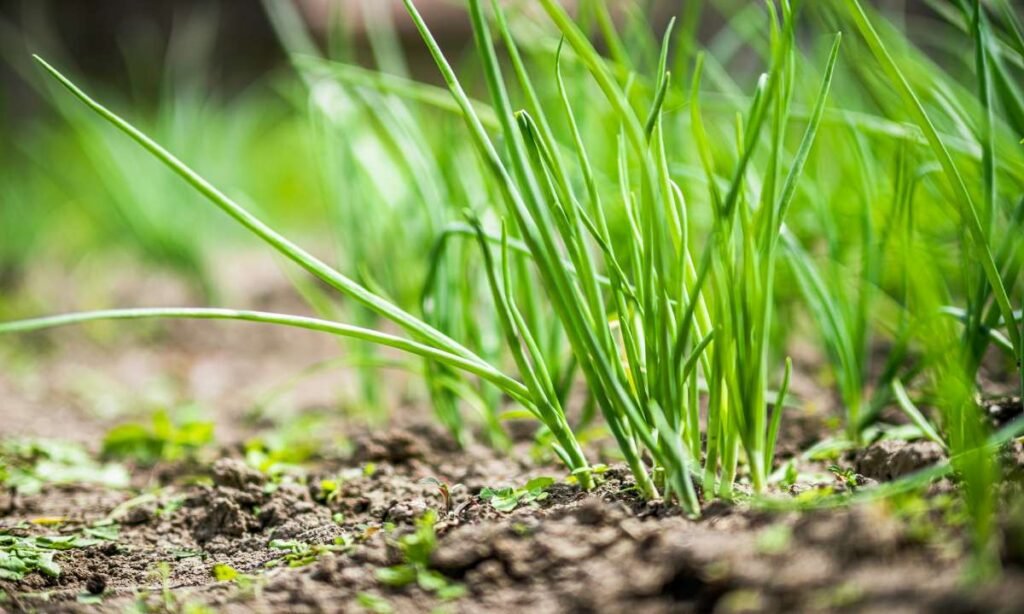I’ve always found joy in watching plants grow, but my small living space doesn’t leave much room for a garden. That’s when I discovered the simplicity and satisfaction of growing green onions indoors. It began as an experiment on my kitchen windowsill, using just a glass of water and a bunch of store-bought green onions. To my amazement, I noticed new growth within just a few days. This small victory in urban gardening provided me with a constant supply of fresh green onions for cooking and added a touch of greenery to my apartment, creating a more vibrant and lively space.
Green onions, also known as scallions or spring onions, are versatile and flavorful additions to many dishes. While they are commonly grown outdoors, cultivating them indoors can be a rewarding experience. In this guide, we’ll cover easy steps on how to grow green onions indoors so you always have some on hand for your culinary endeavors.
Table of Contents

Materials Needed
Before we begin, it’s essential to gather the necessary materials. You’ll need:
- A container with drainage holes, such as a deep pot or a window box
- High-quality potting soil rich in organic matter
- Green onion seeds or previously-grown green onion bulbs
- A watering can or a spray bottle
- A sunny windowsill or grow lights for adequate illumination
- A small trowel or your fingers for planting seeds
Step 1: Preparation
Prepare for success by laying the foundation for your green onion plot.
Selecting a Container
Choosing the proper container is essential for growing green onions indoors. Select a container with adequate drainage holes to prevent waterlogging and ensure proper airflow to the roots. Suitable containers include pots, trays, or even recycled containers such as plastic bottles or milk cartons. Consider the size of the container, ensuring it provides enough space for the onions to grow without overcrowding.
Soil Preparation
Green onions grow in well-draining, nutrient-rich soil. To improve drainage, prepare a soil mixture with equal parts potting soil, compost, and perlite or vermiculite. Before filling the containers, properly mix the ingredients, making sure to leave about an inch of space at the top to stop the soil from spilling during watering.
Planting Depth and Spacing
Create furrows in the soil about 1/4 inch deep and 1 or 2 inch apart for seeds. If you start from the scraps of store-bought green onions, place the bulbs in the soil, spacing them evenly apart. Ensure the soil is evenly moist but not waterlogged to facilitate seed germination. Place the containers in a warm, sunny location or under grow lights to provide adequate light for germination.
Step 2: Planting
Planting green onions is a straightforward process, but attention to detail is key.
Sowing the Seeds
Sprinkle the green onion seeds into the furrows and gently cover them with a thin layer of soil. Pack down the soil lightly to ensure good seed-to-soil contact without compacting it too much.
Moisture is Key
After planting, dampen the soil with your watering can or spray bottle. Keep the soil consistently moist but not soggy. You can also lightly mist the soil with water to maintain moisture levels.
Step 3: Watering and Light
The right balance of water and light is essential for your baby green onions.
Watering

Always check the soil moisture level before watering. Stick your finger about an inch deep into the soil; if it feels dry, it’s time to water. If the top layer is moist, wait a day or two and check again. It’s important to water at the base of the plants to prevent dampening-off disease. Monitor the soil moisture levels regularly and adjust the watering frequency as needed. Additionally, remove any weeds or debris from the containers to avoid competition for nutrients.
Sunlight
Green onions require ample sunlight to grow and thrive. Find a sunny windowsill that receives at least 6 hours of sunlight daily, rotating the container every few days to ensure even growth. If natural light is scarce, use grow lights to supplement light needs. Green onions love the sun; adequate light is crucial for their development.
Step 4: Maintenance
Your green onions will need some love as they grow from seedlings to harvest.
Fertilizing
After the green onions have been growing for a few weeks, you can sprinkle a balanced fertilizer around them once a month. Make sure to water your plants well after applying fertilizer. Apply the fertilizer directly to the soil, avoiding contact with the foliage to prevent burning. Additionally, compost should be periodically incorporated into the soil to replenish nutrients and improve soil structure.
Pruning
To encourage thicker green shoots, trim the tops of the green onions once they are about six inches tall. Use sharp scissors to cut just above the point where the white part of the onion transitions to green.
Pest Management
Watch out for common pests like aphids and thrips, which can infest the green foliage. Remove any affected leaves or plants immediately to prevent the spread of infestations. Use insecticidal soap or neem oil if you notice any pests. Keeping the area around the plants clean and free from decaying plant matter can also deter pests. Additionally, crop rotation and proper sanitation should be practiced to reduce the risk of disease outbreaks.
Harvesting

Your patience is about to pay off. Harvesting green onions is a simple pleasure.
When to Harvest
You can harvest green onions once they are about 6-8 inches tall or have reached the desired thickness. Harvest from the outside edges by gently pulling them up or by cutting them right above the soil level with a pair of scissors.
Regrowth
Green onions have a fantastic regrowth ability. If you leave the roots intact, they can regrow several times. After harvesting a bountiful second crop, keep the soil moist and ensure they continue to receive adequate sunlight.

Uses of Green Onions
Green onions are versatile ingredients commonly used in various culinary dishes, including salads, soups, stir-fries, and garnishes. They add a mild onion flavor and vibrant color to dishes, enhancing their taste and visual appeal. Furthermore, green onions are rich in vitamins, minerals, and antioxidants, making them a nutritious addition to any diet.
Common issues
Here are some common issues you might encounter and their solutions:
Poor Germination
If seeds fail to sprout, they may have been planted too deep or damaged. Next time, try planting them more shallowly and handling them gently. Ensure the soil temperature stays around 65-70°F for optimal germination.
Yellowing Leaves
Yellow leaves can indicate overwatering, nutrient deficiency, or insufficient light. Adjust your watering schedule, fertilize, and provide more light if needed.
Stunted Growth
If your green onions aren’t growing as they should, they may be overcrowded. Thin them out by pulling the smaller ones so the remaining plants have room to thrive.
Overwatering
You may be overwatering if your green onions are droopy and the soil is consistently wet. Allow the soil to dry out slightly between waterings, and adjust your watering habits.
Insufficient Sunlight
If your green onions are leggy or leaning heavily towards the light source, they are not getting enough light. Move the container to a sunnier spot or supplement with grow lights.
Growing green onions indoors is a rewarding process that adds freshness and flavor to your home-cooked meals. By following this comprehensive guide, you’ll soon enjoy the satisfaction of harvesting green onions from the comfort of your own living space. Happy growing!




